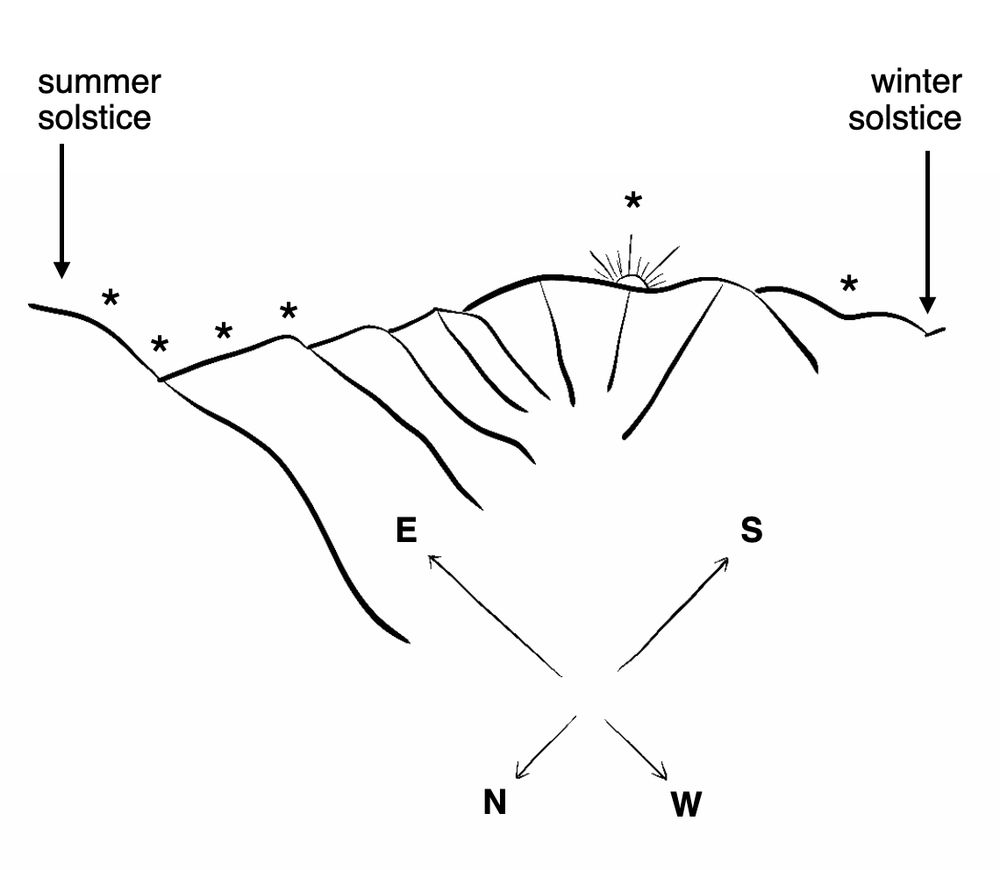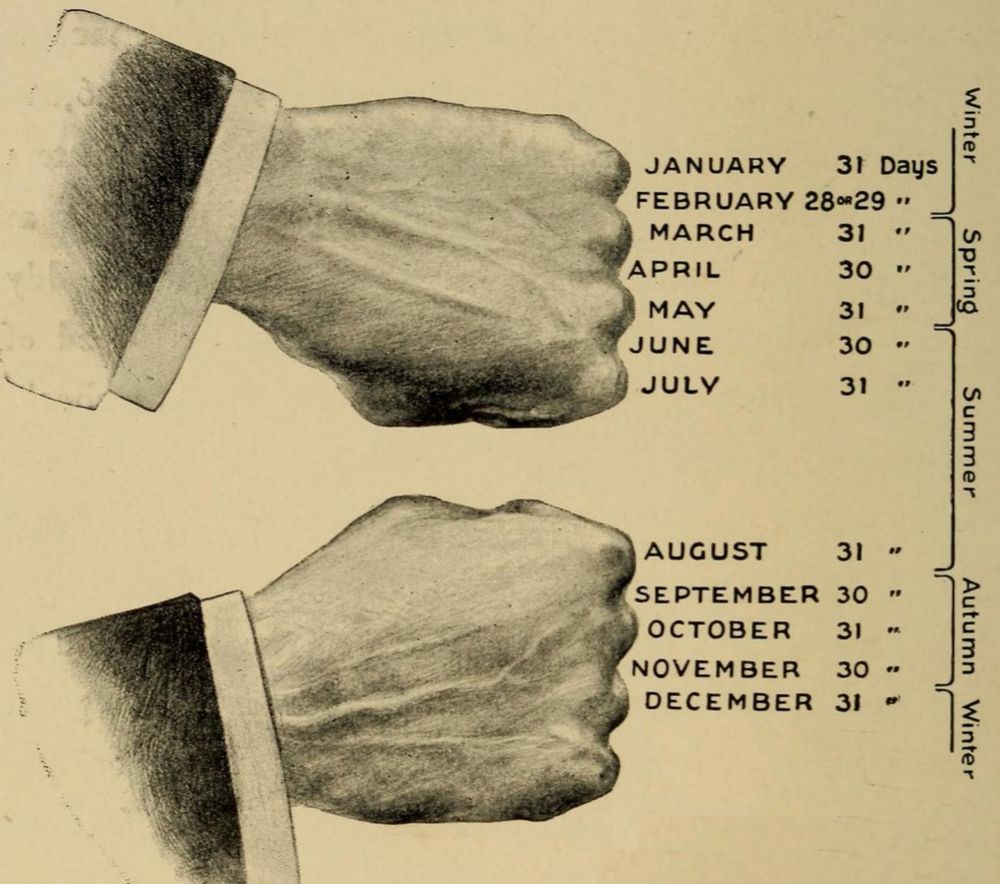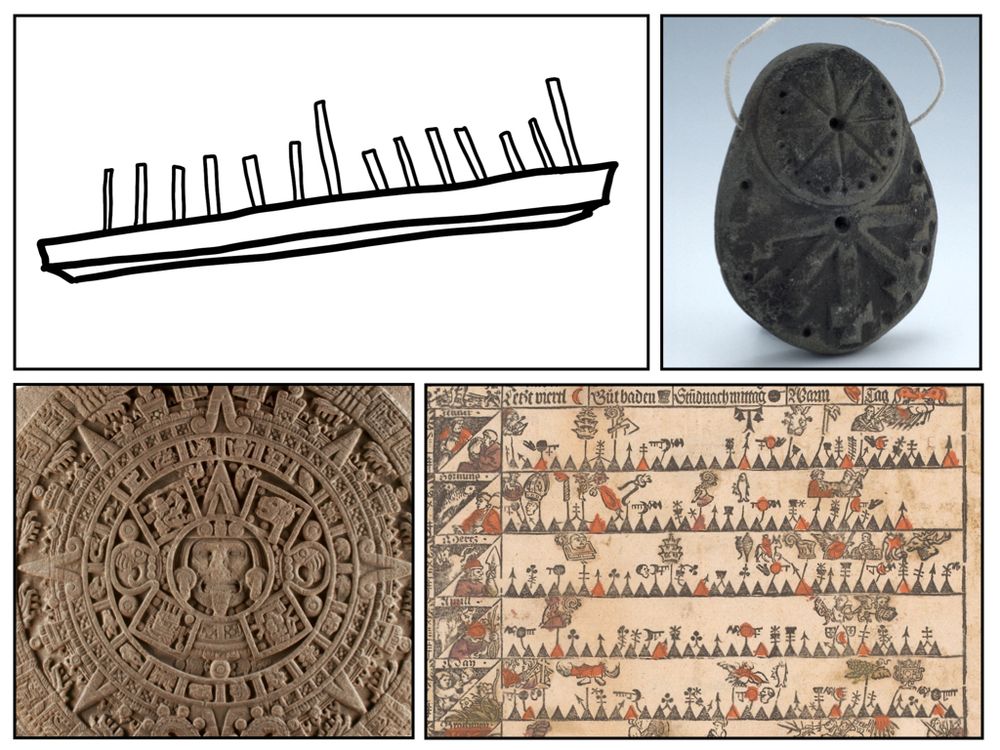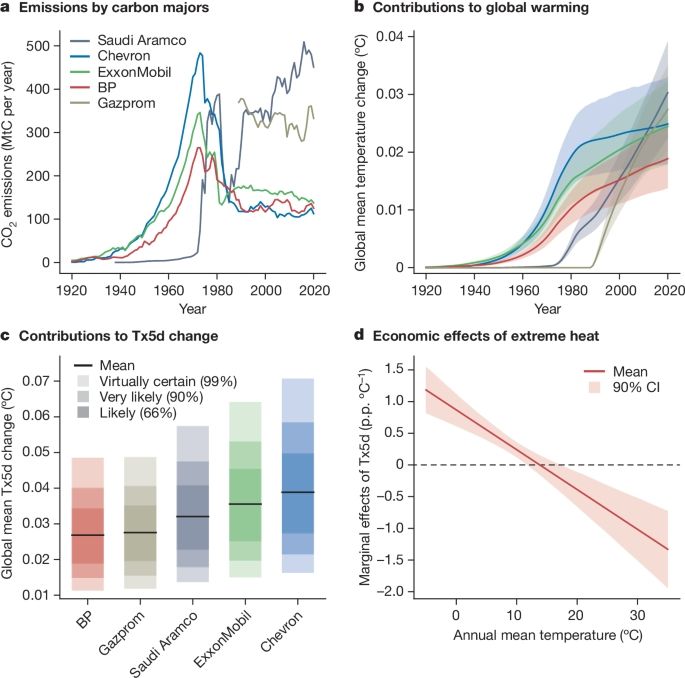thanks a lot Martin!
05.10.2025 16:41 — 👍 0 🔁 0 💬 0 📌 0
thanks a lot Oleg!!
30.09.2025 13:09 — 👍 1 🔁 0 💬 0 📌 0
thanks Mason!!
26.09.2025 11:13 — 👍 0 🔁 0 💬 0 📌 0
thanks a lot Natalia!
25.09.2025 23:07 — 👍 0 🔁 0 💬 0 📌 0
thanks Jakub! everyone has enjoyed our paper
25.09.2025 17:07 — 👍 2 🔁 0 💬 1 📌 0
Huge congratulations to @alexeykoshevoy.bsky.social l who defended his PhD thesis today!! with his co-supervisor @sblldtrch.bsky.social and jury members @simonkirby.bsky.social @gboleda.bsky.social Paula Rubio Fernandez & Benjamin Spector.
25.09.2025 16:42 — 👍 17 🔁 2 💬 5 📌 0

We present our new preprint titled "Large Language Model Hacking: Quantifying the Hidden Risks of Using LLMs for Text Annotation".
We quantify LLM hacking risk through systematic replication of 37 diverse computational social science annotation tasks.
For these tasks, we use a combined set of 2,361 realistic hypotheses that researchers might test using these annotations.
Then, we collect 13 million LLM annotations across plausible LLM configurations.
These annotations feed into 1.4 million regressions testing the hypotheses.
For a hypothesis with no true effect (ground truth $p > 0.05$), different LLM configurations yield conflicting conclusions.
Checkmarks indicate correct statistical conclusions matching ground truth; crosses indicate LLM hacking -- incorrect conclusions due to annotation errors.
Across all experiments, LLM hacking occurs in 31-50\% of cases even with highly capable models.
Since minor configuration changes can flip scientific conclusions, from correct to incorrect, LLM hacking can be exploited to present anything as statistically significant.
🚨 New paper alert 🚨 Using LLMs as data annotators, you can produce any scientific result you want. We call this **LLM Hacking**.
Paper: arxiv.org/pdf/2509.08825
12.09.2025 10:33 — 👍 259 🔁 94 💬 5 📌 19

Image of labubu doll labeled labubu next to image of spiky labubu doll labeled lakiki
::slowly stands while clapping::
10.09.2025 23:07 — 👍 1014 🔁 257 💬 6 📌 11
Congrats, well deserved!
04.09.2025 14:56 — 👍 1 🔁 0 💬 0 📌 0

A global database on blowguns with links to geography and language | Evolutionary Human Sciences | Cambridge Core
A global database on blowguns with links to geography and language - Volume 7
New paper! ⚡ With Gabriel Aguirre and Marcelo Sánchez, looking at patterns of blowgun types and use across societies of the world. We find areal patterns, similarities mediated by cultural connections, and specific types characterizing distinct branches of the Austronesian language tree. 🎯
27.08.2025 21:37 — 👍 22 🔁 8 💬 0 📌 0
I am on a 6 hour train journey without air conditioning, but it’s worth it because I am heading to #SLE2025! This is my first linguistics conference in a while.
25.08.2025 14:32 — 👍 5 🔁 0 💬 0 📌 0

Models as Prediction Machines: How to Convert Confusing Coefficients into Clear Quantities
Abstract
Psychological researchers usually make sense of regression models by interpreting coefficient estimates directly. This works well enough for simple linear models, but is more challenging for more complex models with, for example, categorical variables, interactions, non-linearities, and hierarchical structures. Here, we introduce an alternative approach to making sense of statistical models. The central idea is to abstract away from the mechanics of estimation, and to treat models as “counterfactual prediction machines,” which are subsequently queried to estimate quantities and conduct tests that matter substantively. This workflow is model-agnostic; it can be applied in a consistent fashion to draw causal or descriptive inference from a wide range of models. We illustrate how to implement this workflow with the marginaleffects package, which supports over 100 different classes of models in R and Python, and present two worked examples. These examples show how the workflow can be applied across designs (e.g., observational study, randomized experiment) to answer different research questions (e.g., associations, causal effects, effect heterogeneity) while facing various challenges (e.g., controlling for confounders in a flexible manner, modelling ordinal outcomes, and interpreting non-linear models).

Figure illustrating model predictions. On the X-axis the predictor, annual gross income in Euro. On the Y-axis the outcome, predicted life satisfaction. A solid line marks the curve of predictions on which individual data points are marked as model-implied outcomes at incomes of interest. Comparing two such predictions gives us a comparison. We can also fit a tangent to the line of predictions, which illustrates the slope at any given point of the curve.

A figure illustrating various ways to include age as a predictor in a model. On the x-axis age (predictor), on the y-axis the outcome (model-implied importance of friends, including confidence intervals).
Illustrated are
1. age as a categorical predictor, resultings in the predictions bouncing around a lot with wide confidence intervals
2. age as a linear predictor, which forces a straight line through the data points that has a very tight confidence band and
3. age splines, which lies somewhere in between as it smoothly follows the data but has more uncertainty than the straight line.
Ever stared at a table of regression coefficients & wondered what you're doing with your life?
Very excited to share this gentle introduction to another way of making sense of statistical models (w @vincentab.bsky.social)
Preprint: doi.org/10.31234/osf...
Website: j-rohrer.github.io/marginal-psy...
25.08.2025 11:49 — 👍 941 🔁 283 💬 49 📌 19
Congrats!
07.07.2025 14:59 — 👍 1 🔁 0 💬 0 📌 0
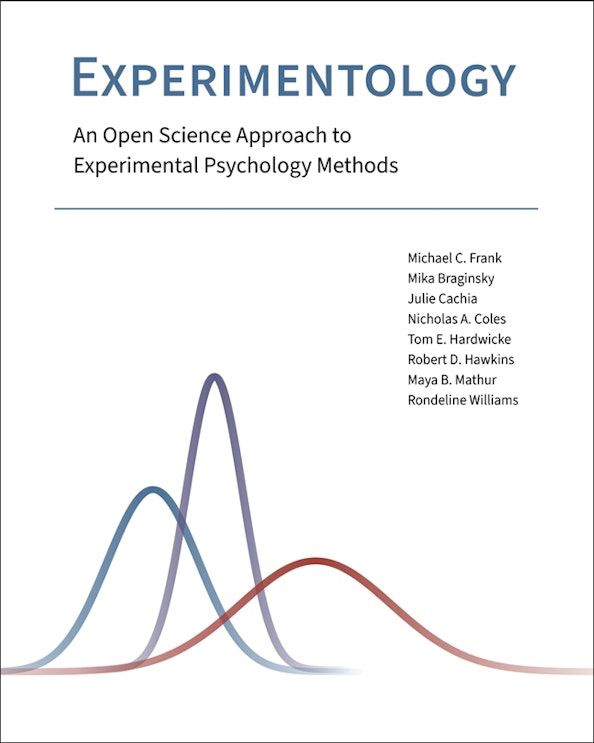
Experimentology cover: title and curves for distributions.
Experimentology is out today!!! A group of us wrote a free online textbook for experimental methods, available at experimentology.io - the idea was to integrate open science into all aspects of the experimental workflow from planning to design, analysis, and writing.
01.07.2025 18:25 — 👍 534 🔁 228 💬 10 📌 15
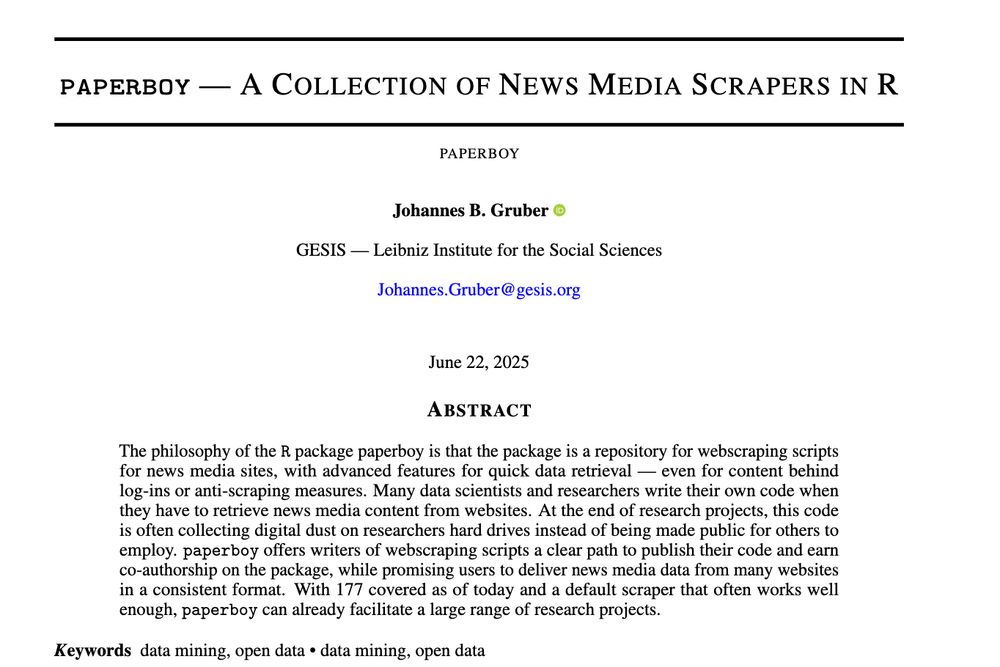
Want to easily scrape data from news media sites?
There's an R package for that!
paperboy
"paperboy offers writers of web scrap[ers] a clear path to publish their code & earn co-authorship on the package, while deliver[ing] news media data from many websites in a consistent format."
26.06.2025 13:46 — 👍 122 🔁 35 💬 6 📌 2
For some reason bluesky doesn’t work on Firefox anymore, event after I updated it. Is it the case for anyone else?
11.06.2025 09:50 — 👍 0 🔁 0 💬 0 📌 0

Language depends on copying (e.g. of words, signs). And language in turn is needed for many other things.
When and why did our ancestors gain this ability to copy? Our (Ron, Elisa & me) archaeological reanalysis says: in the last million years. Just out:
dx.doi.org/10.1093/oxfo...
26.05.2025 10:32 — 👍 44 🔁 16 💬 2 📌 0

Corpus-based approaches to evolutionary dynamics in language
AbstractPragmatic-interactional aspects of present-day language use as well as historical language change have come to be regarded as an important source o
🚨New publication alert!
"Corpus-based approaches to evolutionary dynamics in language" (w/ @stefanhartmann.bsky.social) out now in the in the Oxford Handbook of Approaches to Language Evolution. Kudos to @limorraviv.bsky.social & @cedricboeckx.bsky.social for putting this great volume together!
25.05.2025 15:56 — 👍 25 🔁 9 💬 2 📌 1
Out now in @pnas.org! 🌹Is a rose by any other name still as roselike?🌹
We study the prevalence of iconicity (does a word look/sound like what it means?) and systematicity (are pronunciation/meaning relationships shared across multiple words?) in large datasets of ASL, English, and Spanish.
🧵1/N
23.04.2025 17:47 — 👍 18 🔁 9 💬 1 📌 3
Apply for our PhD position in language acquisition / computational linguistics in Groningen until 24 April! Job ad is here:
www.rug.nl/about-ug/wor...
26.03.2025 17:22 — 👍 5 🔁 4 💬 0 📌 1
Psych-DS
A specification for psychological datasets. JSON metadata, predictable directory structure, and machine-readable specifications for tabular datasets.
Psych-DS is (1) spellcheck for your datasets and (2) a pathway to standardizing data in our academic fields that *everyone* can learn.
And it's live RIGHT NOW!
psych-ds.github.io
(This is the announcement post I've been leading up to)
09.04.2025 19:37 — 👍 133 🔁 60 💬 9 📌 12

New paper on misperceptions out in PNAS @pnas.org
www.pnas.org/doi/10.1073/...
Why do people overestimate the size of politically relevant groups (immigrant, LGBTQ, Jewish) and quantities (% of budget spent on foreign aid, % of refugees that are criminals)?🧵👇
07.04.2025 12:00 — 👍 270 🔁 98 💬 12 📌 21
Postgraduate researcher interested in cognition and multimodal communication at the University of Birmingham
Professor of Anthropology at Washington State University. Faculty page: https://anthro.vancouver.wsu.edu/people/hagen/
Views expressed are my own and do not reflect those of my employer or other organizations I'm affiliated with.
Cognitive neuroscientist fascinated by human development. Interested in learning, creativity, compositionality, abstract knowledge. Assistant professor @thechbh.bsky.social @bbabylab.bsky.social Uni of Birmingham
sociology of culture, cultural evolution
grad student EUSPb
Linguist, PhD (language proficiency, semantic knowledge), university lecturer, Tampere University, Finland
Researchportal.tuni.fi/en/persons/maija-tervola
Chair of the Linguistic Association of Finland Linguistics.fi
Amateur translator LT>FI
Postdoc at RIKEN (Japan), exploring human history with evolutionary models.
Focus: universal anthropology, cultural evolution, statistical physics, and complex systems theory.
https://scholar.google.com/citations?user=yKxFW-IAAAAJ&hl=en
Postdoc at Uppsala University Computational Linguistics with Joakim Nivre
PhD from LMU Munich, prev. UT Austin, Princeton, @ltiatcmu.bsky.social, Cambridge
computational linguistics, construction grammar, morphosyntax
leonieweissweiler.github.io
Language scientist at UC Irvine
📊 Data visualisation specialist.
💻 #RStats | #Python | #D3.
🎨 Generative artist.
🏃♀️ Runner.
Website: https://nrennie.rbind.io/
She/her. Views my own.
Chair of Psychology of Language Learning at Abertay University. Here for language & politics. IRL also tango.
Cultural evolution of the mind | Assistant Professor @ University of Chicago, Booth School of Business & Faculty Affiliate of UChicago Data Science Institute | He/his | https://joshuaconradjackson.com
Professor of Interdisciplinary Stuff @ Department of Social and Behavioral Sciences, Toulouse School of Economics (TSE), and Institute for Advanced Study in Toulouse (IAST).
Mathematical models of cooperation and conflict.
https://jorgeapenas.github.io
Linguistic anthropologist at the University of New England, on unceded Anaiwan land. Focused on Australia, Southeast Asia, West Africa.
Researcher at The Australian Message Stick Project
https://messagesticks.com.au/
The premier research center for #ComplexSystems #science.
santafe.edu
linktr.ee/sfiscience
Cultural evolution, cultural adaptation, innovation
Postdoc at Aarhus University with @felixthehauskat.bsky.social
Asst. Prof. at George Mason University. Interested in cultural evolution, human behavior, economic development and history. https://sites.google.com/site/jonathanfschulz/
🔎 Misinformation, social media & the news 🗞️
🇨🇭 Postdoc at the University of Zurich, previously Reuters Institute & ENS 🇫🇷
Professor for #CulturalDataAnalytics at Tallinn University in #Estonia
#complexity #netsci #arthistory #aesthetics
#culturalanalytics #compsocsci #infovis
"My PhD is in Art History" – Dr. Zoidberg
(max/max)
Computational cognitive scientist, developing integrative models of language, perception, and action. Assistant Prof at NYU.
More info: https://www.nogsky.com/











